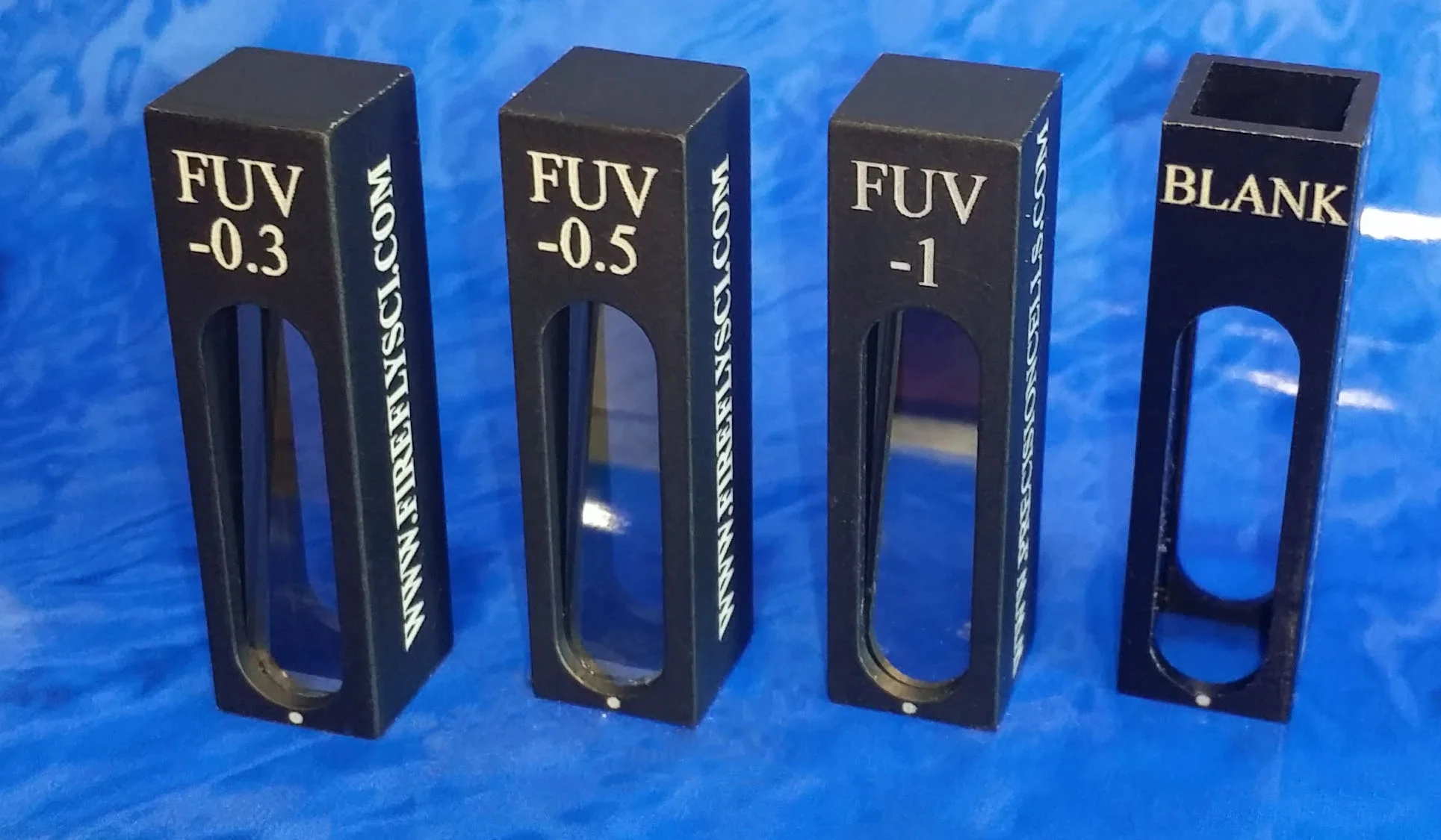How to Determine Cuvette Volume
/Dimensional Chart For Type 1
Cuvette volume is the maximum amount of sample that a cuvette can safely hold. The most common capacity is 3.5 mL for a standard 10 mm cell, but how do we figure it out?
How We Calculate Cuvette Volume
It is very easy to calculate the volume of any cuvette. We have dimension charts on each product page that show you exactly what figures you need. Here is the formula that we use:
Inner Length x Inner Width x Inner Height x 80% = cuvette volume
So let’s just take a standard Type 1 – 10 mm spectrophotometer cuvette for an example. Here is how the formula would look:
10 (IL) x 10 (IW) x 43.75 (IH) x 80% = 3.5 mL
But wait, where does the 80% come from? Good question! The formula should really look like this:
10 x 10 x 43.75 = 43.75 mL
The reason we use the 80% value is because you should never fill up a cuvette over 80%. This makes a dangerous situation because when the samples are too close to the top of the cuvette, they can spill. Spills can occur on the lab bench, in your machine, or on your skin (hopefully you are wearing gloves).
Do I Need to Fill the Cuvette to 80%?
The answer to this question depends on what type of cuvette you are using and the Z-Dimension (laser height) of your machine. Taking our Type 1 – 10 mm cuvette as an example and let’s just say our spectrophotometer has a ZD of 8.5 mm. We want to make sure that the sample reaches at least 12 mm high in the cuvette. So, in theory, we would use the same volume formula, but change the height to 12 mm and leave out the 80% value.
Here is what it would look like:
10 x 10 x 10.75 = 10.75 mL
Note: We get the 10.75 figure by subtracting the base thickness of 1.25 mm from the 12 mm value.
Are There Cuvettes That Need to be Totally Filled?
Most cuvettes do not need to be completely filled to work. So, if you have an experiment that requires a small sample size, don’t just go by the cuvette volume listed on our site. You can figure out the best volume by taking the ZD of your machine and figuring it out that way.
Of course, there are some exceptions to the rule and some cuvettes do need to be filled 100% to work properly. These cuvettes are our Micro Focus Cell, our Type 701M and 701MFL sub-micro cells, and any type of flow through cell. When the sample sizes are as small as 2 -50 uL, you have to make sure there is enough sample in the cuvette for the light to pass through.
Now you are an expert in how to calculate the cuvette volume of any cuvette. Remember to take your machines Z-Dimension into account if you need to conserve sample. There are three Z-Dimensions used which are 8.5 mm, 15 mm, and 20 mm. If you have any questions please leave us a comment below or send us an e-mail (info@fireflysci.com).
Here’s to your success!
The FireflySci Team
![firefly_logo_FINAL [Black].jpg](https://images.squarespace-cdn.com/content/v1/5411d5c0e4b02e1c8b27565a/1434491508803-XB4OF7YDY46Z72L5U5AP/firefly_logo_FINAL+%5BBlack%5D.jpg)









